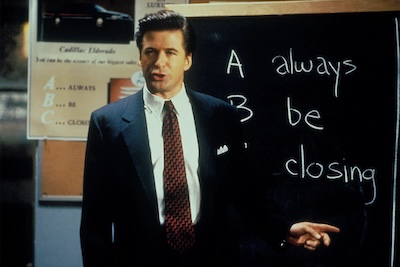Marianne Faithfull was just a dabbler when it came to acting. She appeared in fewer than twenty films, guested on a few television shows, and performed some voiceover work in her later years. Her film credits that one might call notable include the then risqué Girl on a Motorcycle (1968), director Tony Richardson’s Hamlet (1969), in which she played Ophelia, a small part in the deeply underrated Intimacy (2001), and Sophia Coppola’s love it or hate it Marie Antoinette (2006).
Early in her career, she was primarily known as Mick Jagger’s girlfriend. She cracked the Top 40 singles chart in the U.S. four times in 1964-65. most notably with her version of “As Tears Go By,” a song written by Jagger and Keith Richards that The Rolling Stones would go on to record a few years later. Faithfull’s voice was light and lovely back then, but her songs lacked weight. They were so airy that they just evaporated into the ether—however pleasantly.
When Mick and Keith started experimenting with drugs, Faithfull was all too eager to join in, and she nearly died due to an unintentional overdose. She was the inspiration for the Stones’ hit “Wild Horses” and wrote the lyrics to the album cut “Sister Morphine” that appears on the Stones classic “Sticky Fingers” album from 1971. For inexplicable reasons, Faithfull was not credited as a co-writer on the song (although she did receive royalties). A protracted legal battle ensued and Faithfull’s name has been credited on all future pressings of “Sister Morphine” since 1994. She and Jagger had long fallen out by then, and Faithfull became known more as a cautionary tale due to her continued drug use.
At this point, you might be wondering why I’m taking the time to write a tribute to someone who had some musical success and a marginal film and TV career. There are two answers to that question:
- Because she had one of the most transformational comebacks in the history of popular music
- Because I damn well want to
After more than a decade of addiction, homelessness, and eating disorders, Faithfull re-emerged clean and under control with the 1979 album “Broken English.” The record was a provocative New Wave-tinged stunner that earned Faithfull a Grammy nomination. What was most fascinating was how unrecognizable Faithfull’s voice had become since her hit-making days. Aside from the heroin and the hard-living, Faithfull had a severe bout with laryngitis that turned her formally angelic voice into a croak that should have been hard on the ears. In the recent history of popular music, I can only think of one other popular music performer whose voice changed so much over their years of recording—the great Leonard Cohen.
Somehow, by having her instrument battered and bruised by self-harm and despair, she had emerged on the other side of those dark days with a voice of character and weight. Her new sound cut to the bone in a way her former, prettier voice never could. After “Broken English,” Marianne Faithfull was no longer a singer but an artist.
Faithfull released fourteen more albums after breaking her cycle of abuse and recording one of the last great albums of the ‘70s. Her last was 2021’s “She Walks in Beauty” with frequent Nick Cave compatriot Warren Ellis. Every single one of those 14 albums was a remarkable gem. While she aged out of radio airplay, she became an icon with no small number of cult-like followers (including me). Her records mainly comprised a few original compositions and brilliantly chosen covers. In one last stick of a well-deserved shiv, Faithfull recorded her own version of “Sister Morphine” in 1979, which I dare say betters the Stones’ original recording.
I came to Faithfull through film. Sometime in the late ‘80s, I plucked a movie I had never heard of called Trouble in Mind off of the VHS rack at my local video store. Directed by Robert Altman acolyte Alan Rudolph, Trouble in Mind is an outstanding modern noir profoundly deserving of rediscovery. The film received excellent reviews at the time, but the studio was clueless in terms of promotion despite the critical raves and the wonderfully eclectic cast, including Kris Kristofferson, Keith Carradine, Genevieve Bujold, Lori Singer, Joe Morton, and Divine (the frequent muse of John Waters).
You may have noticed that I didn’t mention Faithfull among the cast. Composer Mark Isham created the film’s lush score. On the film’s soundtrack, Faithfull can be heard singing the film’s title song, and I’ll be damned if it didn’t floor me then and doesn’t continue to do so to this day. The song is as spare as can be: a moody synthesizer, a mournful saxophone, and a touch of graceful piano. Oh, and that deeply lived-in voice singing a six-verse song with no chorus.
One of the great joys of loving movies is when you walk into a theater, cue up a film on a streaming service, or, in a time long past, pop in a random movie on an oversized paperweight known as a VCR that you pulled off the shelf of the deceased business known as a video store. You look at the cover, read the synopsis, watch the trailer, and you’re intrigued enough to walk into the dark of the theater or to press play in your home. On the best of days, you get enveloped by a film that you took a chance on and immensely enjoyed, and in doing so, you might even make a discovery. Trouble in Mind gave me Marianne Faithfull, which led to thirty years of listening pleasure. All from a dollar and forty-nine cent rental. What a bargain.
When I heard of Faithfull’s passing, the first thing I did was cue up “Trouble in Mind,” a song she did not write but certainly owns. The opening verse is an absolute beaut that hints at the painful lyrics to come:
Trouble in mind, I’m blue
But I won’t be blue always
The sun will shine
In my back door some day
Faithfull spent a long time being blue, a long time with trouble in mind. The sun did find her back door one day, and it stuck around for a long, long time.
Marianne Faithfull died on January 30, 2025. She was 78 years old.










I always found her personal life interesting. Truly, one of a kind, especially in the world of recorded music.
I'm damn glad you wrote the article.